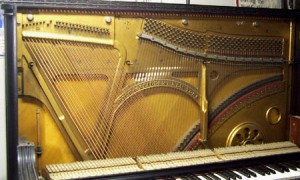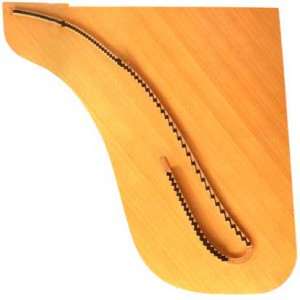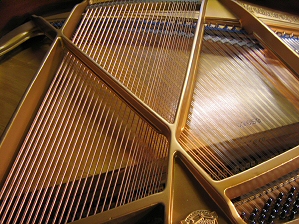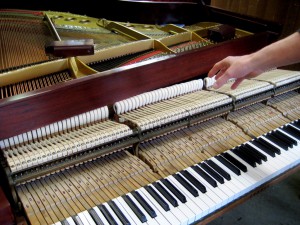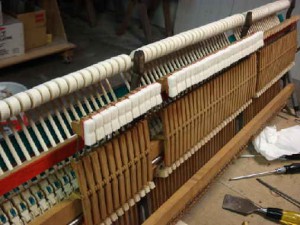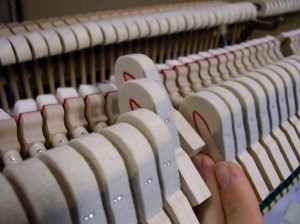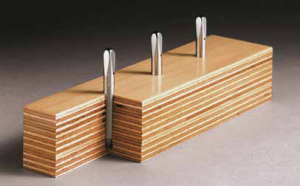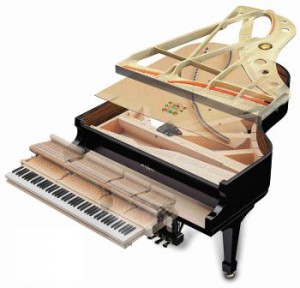Pianos are complicated machines with many parts, but unlike most instruments, everything is closed up behind the case so we hardly ever see what a piano really is. Here are the major parts inside a piano.
The Plate: This keeps the piano from imploding. Made of cast iron, the plate holds the 30-40,000 pounds of pressure from the strings. The plate is what makes a piano really heavy. The plate is easily visible on a grand, but you have to remove case parts to see it on an upright.
The Sounboard: The soundboard amplifies the vibrations produced by the strings. Piano soundboards are made of spruce wood. Boards 4″-6″ inches wide are glued together to make large board about 1/2 thick that sits right under the strings. The back of the sounboard is reinforced with perpindicular wooden “ribs” that strengthen the soundboard and help maintain “the crown” of the soundboard (the soundboard is supposed to be slightly arched to get the best tone).
The Strings: piano strings are made of tempered high-carbon steel. The bass strings are steel wound with copper wire to increase the diameter and make the pitch lower. The strings do the vibrating which the soundboard will amplify. There are about 200 strings on the average piano.
The Action: This is where most of the moving parts are. Uprights and grands have very different actions, but they accomplish the same goal: throw the felt hammer into the string to begin the vibrations.
The Hammers: The hammers are part of the action, but they are important enough they get their own paragraph. The hammer is what starts the string vibrating. Piano hammers are made of felt, layered and pack over a wooden core. The quality and condition of the hammers has a huge impact on the quality of sound your piano produces.
Pinblock: The pinblock holds the tuning pins tightly in place to the piano can be finely tuned and hopefully stay in tune! The pinblock is made over several layers of laminated rock maple.




